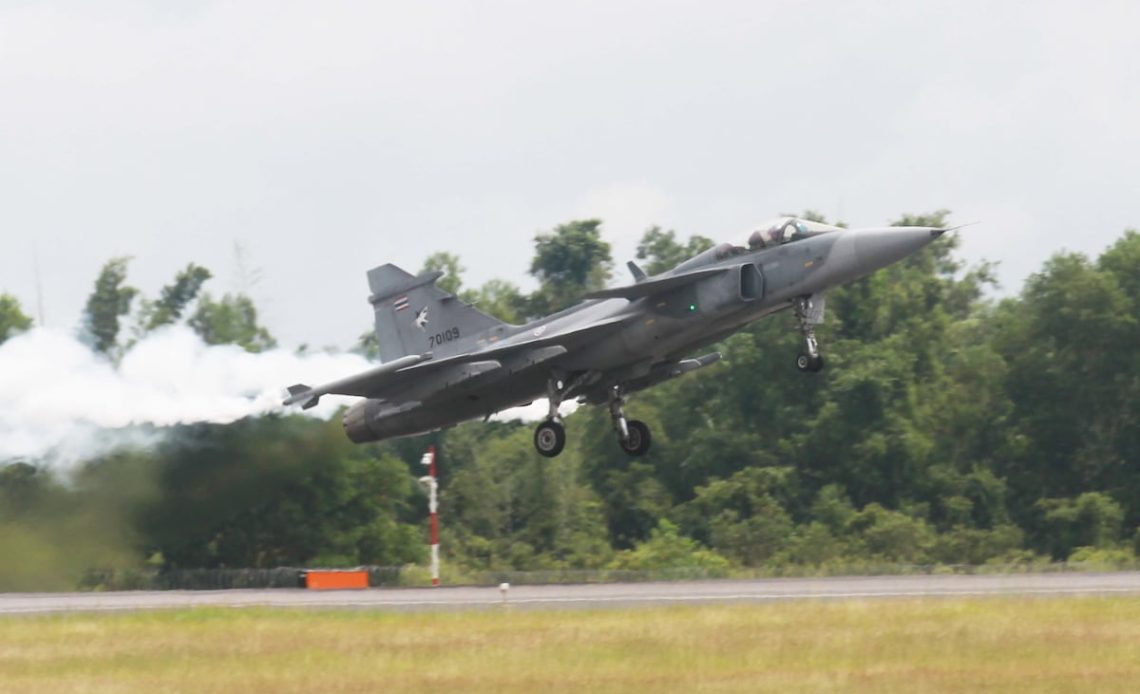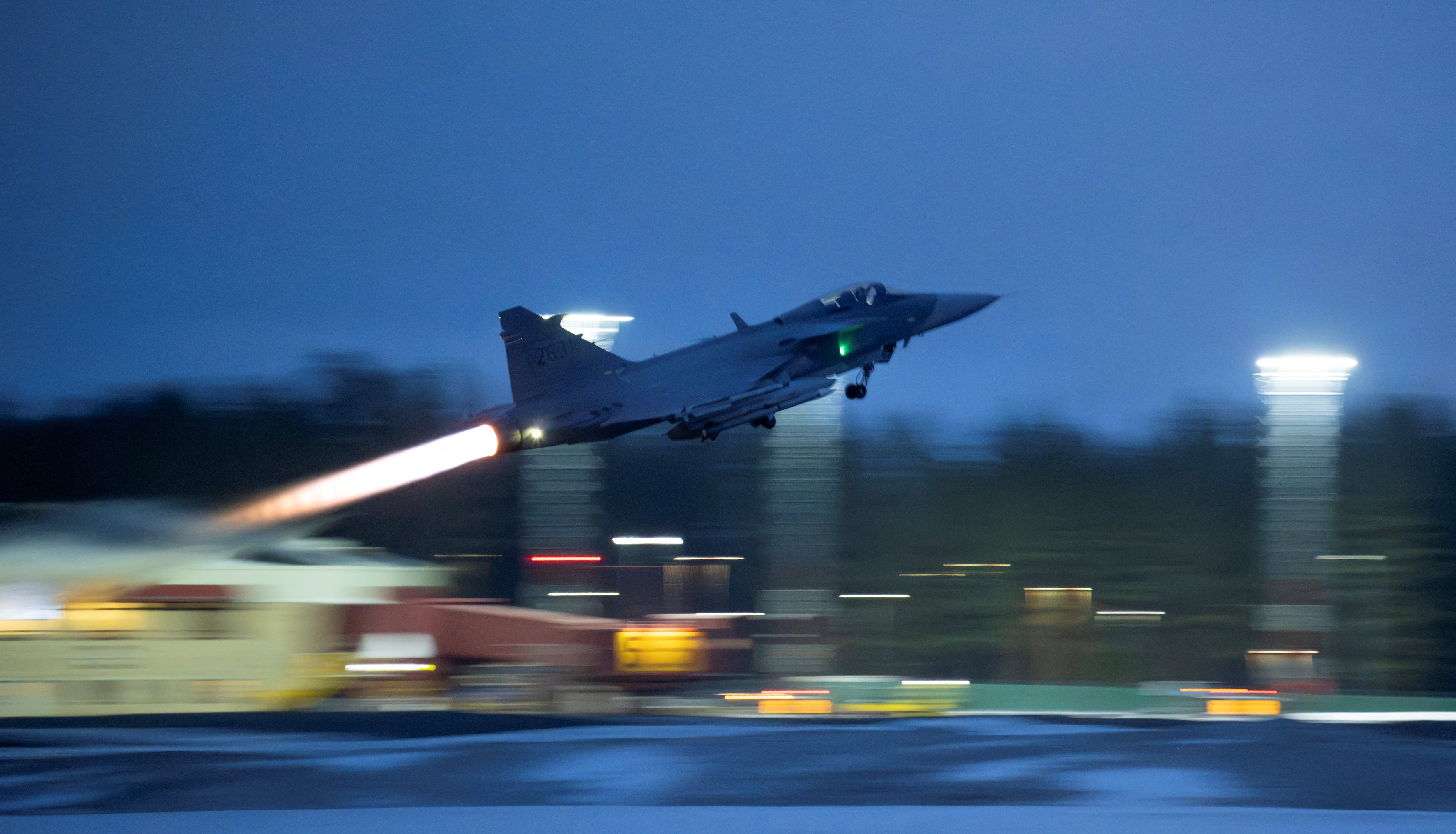
CHRISTCHURCH, New Zealand — The Royal Thai Air Force has nominated the Gripen E/F fighter jet to replace the country’s aging F-16A/Bs in a hard-fought contest involving Saab and Lockheed Martin, officials announced on Tuesday.
A service committee deliberated for ten months before recommending the Gripen, though government approval is still required before a contract can be signed. “It can be concluded that the JAS 39 Gripen E/F attack fighter has the ability to meet the strategic needs of the air force,” the panel announced.
A Thai Air Force white paper, released on Feb. 29, stated the warplane program would deliver 12-14 fighters.
The military envisions buying four Gripens with a 19-billion-baht (roughly $560 million) budget from FY2025-2029. The remaining aircraft will be procured through FY2034 to equip 102 Squadron stationed at Korat in northeastern Thailand, which will retire its 1980s-era F-16s in 2028.
The Gripen E defeated Lockheed’s F-16 Block 70/72 offering, so the Thai decision represents an important win for manufacturer Saab. Lockheed Martin recently delivered its 4,600th F-16.
The Royal Thai Air Force is familiar with Saab’s platform after ordering twelve Gripen C/Ds in 2008; these were recently upgraded under a January 2021 contract.
RELATED

Saab’s Robert Björklund, head of the Gripen campaign for Thailand, told Defense News earlier this year that the country’s existing fleet is “highly reliable, highly versatile and brings a very wide range of weapon options, including its highly effective RBS15 anti-ship missile.”
A Saab spokesperson cautioned that the service committee decision in favor new models means “no details are decided” yet, but noted the company may include MBDA Meteor missiles in its final package.
Saab’s and Lockheed Martin’s final offers were submitted on August 20, and both technology transfer and offset pledges – a term used to broadly describe economic quid pro quos – played a critical part in the selection process.
Related: The Army Is Paying $87 Million for An Upgraded Carl Gustaf
Thailand eagerly sought offsets under a policy designed “to create opportunities for development of its defense industry,” according to the Air Force.
Saab’s offer may also include upgrades to Thailand’s two Erieye airborne early-warning aircraft. The Air Force white paper said their dorsal-mounted radars are to be replaced from FY2026-2029, but Bangkok has no money available at present.
Thailand also has a second fighter requirement for 12-14 aircraft slated to replace F-5E/Fs from FY2031-2035, as well as a third project to succeed further F-16A/Bs from FY2037-2046.
Gordon Arthur is an Asia correspondent for Defense News. After a 20-year stint working in Hong Kong, he now resides in New Zealand. He has attended military exercises and defense exhibitions in about 20 countries around the Asia-Pacific region.
Author: Gordon Arthur
Source: DefenseNews



